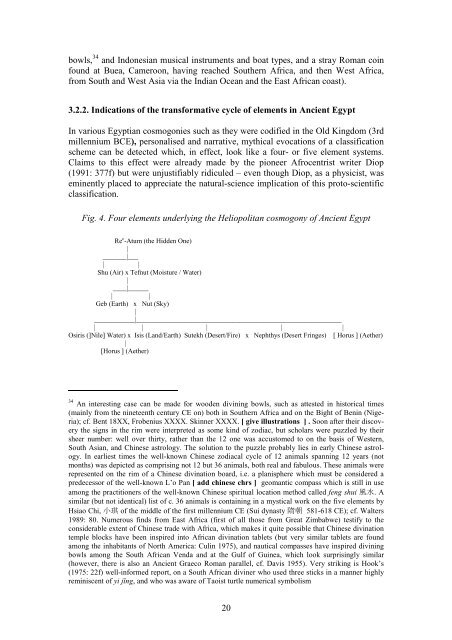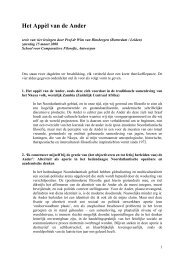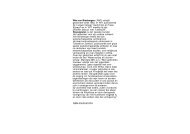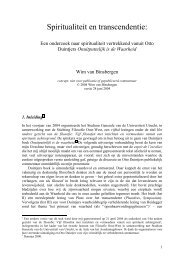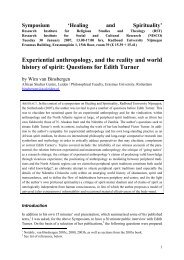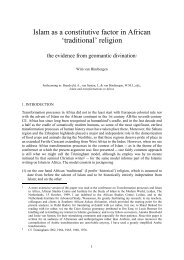Izanami giving birth to Kagutsuchi / Fire - Shikanda.net
Izanami giving birth to Kagutsuchi / Fire - Shikanda.net
Izanami giving birth to Kagutsuchi / Fire - Shikanda.net
You also want an ePaper? Increase the reach of your titles
YUMPU automatically turns print PDFs into web optimized ePapers that Google loves.
owls, 34 and Indonesian musical instruments and boat types, and a stray Roman coin<br />
found at Buea, Cameroon, having reached Southern Africa, and then West Africa,<br />
from South and West Asia via the Indian Ocean and the East African coast).<br />
3.2.2. Indications of the transformative cycle of elements in Ancient Egypt<br />
In various Egyptian cosmogonies such as they were codified in the Old Kingdom (3rd<br />
millennium BCE), personalised and narrative, mythical evocations of a classification<br />
scheme can be detected which, in effect, look like a four- or five element systems.<br />
Claims <strong>to</strong> this effect were already made by the pioneer Afrocentrist writer Diop<br />
(1991: 377f) but were unjustifiably ridiculed – even though Diop, as a physicist, was<br />
eminently placed <strong>to</strong> appreciate the natural-science implication of this pro<strong>to</strong>-scientific<br />
classification.<br />
Fig. 4. Four elements underlying the Heliopolitan cosmogony of Ancient Egypt<br />
Re c -Atum (the Hidden One)<br />
|<br />
_______|___<br />
| |<br />
Shu (Air) x Tefnut (Moisture / Water)<br />
|<br />
____|______<br />
| |<br />
Geb (Earth) x Nut (Sky)<br />
|<br />
____________|____________________________________________________________<br />
| | | | |<br />
Osiris (]Nile] Water) x Isis (Land/Earth) Sutekh (Desert/<strong>Fire</strong>) x Nephthys (Desert Fringes) [ Horus ] (Aether)<br />
|<br />
[Horus ] (Aether)<br />
34 An interesting case can be made for wooden divining bowls, such as attested in his<strong>to</strong>rical times<br />
(mainly from the ni<strong>net</strong>eenth century CE on) both in Southern Africa and on the Bight of Benin (Nigeria);<br />
cf. Bent 18XX, Frobenius XXXX. Skinner XXXX. [ give illustrations ] . Soon after their discovery<br />
the signs in the rim were interpreted as some kind of zodiac, but scholars were puzzled by their<br />
sheer number: well over thirty, rather than the 12 one was accus<strong>to</strong>med <strong>to</strong> on the basis of Western,<br />
South Asian, and Chinese astrology. The solution <strong>to</strong> the puzzle probably lies in early Chinese astrology.<br />
In earliest times the well-known Chinese zodiacal cycle of 12 animals spanning 12 years (not<br />
months) was depicted as comprising not 12 but 36 animals, both real and fabulous. These animals were<br />
represented on the rim of a Chinese divination board, i.e. a planisphere which must be considered a<br />
predecessor of the well-known L’o Pan [ add chinese chrs ] geomantic compass which is still in use<br />
among the practitioners of the well-known Chinese spiritual location method called feng shui 風水. A<br />
similar (but not identical) list of c. 36 animals is containing in a mystical work on the five elements by<br />
Hsiao Chi, 小琪 of the middle of the first millennium CE (Sui dynasty 隋朝 581-618 CE); cf. Walters<br />
1989: 80. Numerous finds from East Africa (first of all those from Great Zimbabwe) testify <strong>to</strong> the<br />
considerable extent of Chinese trade with Africa, which makes it quite possible that Chinese divination<br />
temple blocks have been inspired in<strong>to</strong> African divination tablets (but very similar tablets are found<br />
among the inhabitants of North America: Culin 1975), and nautical compasses have inspired divining<br />
bowls among the South African Venda and at the Gulf of Guinea, which look surprisingly similar<br />
(however, there is also an Ancient Graeco Roman parallel, cf. Davis 1955). Very striking is Hook’s<br />
(1975: 22f) well-informed report, on a South African diviner who used three sticks in a manner highly<br />
reminiscent of yi jīng, and who was aware of Taoist turtle numerical symbolism<br />
20


